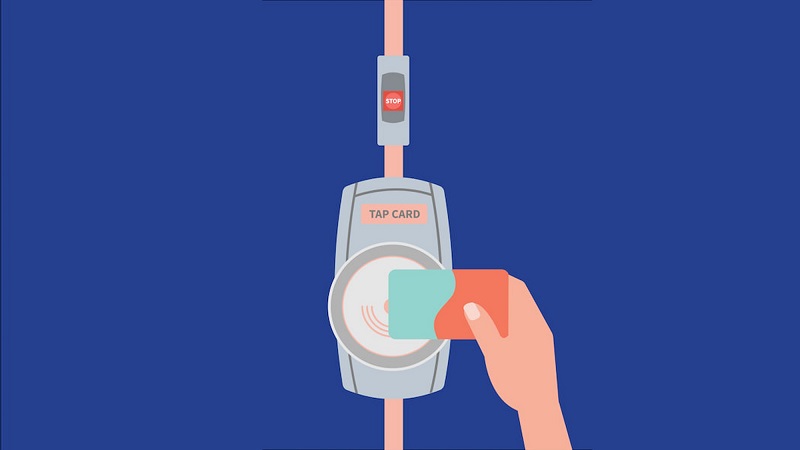Open payments represent a significant shift in the banking landscape, transforming how financial transactions are conducted and challenging the traditional dominance of banks and payment processors. Built on the foundation of open banking, which allows third-party providers to access bank data through APIs (Application Programming Interfaces), open payments leverage this connectivity to enable faster, more secure, and often more cost-effective transactions. These changes are reshaping the role of banks in the payment’s ecosystem, empowering FinTechs, and providing consumers and businesses with new ways to manage their finances.
What Are Open Payments?
Open payments are financial transactions facilitated through open banking APIs, allowing third-party providers to directly initiate payments from a customer’s bank account without the need for intermediaries like credit card networks. This approach streamlines the payment process by eliminating intermediaries, reducing fees, and providing faster settlement times.
Unlike traditional card payments, open payments are typically bank-to-bank transfers. By leveraging Payment Initiation Services (PIS) under open banking, payments can be directly authorized and processed by the user through their bank, offering a more seamless and secure payment option.
Key Ways Open Payments Are Changing the Banking Landscape
1. Disintermediation of Payment Processing
Traditionally, banks and card networks like Visa and Mastercard have played central roles in facilitating payments. Open payments bypass these middlemen by enabling direct bank-to-bank transfers. This process reduces the reliance on card networks and other payment processors, effectively disintermediating traditional players.
- Impact on Banks: Banks are no longer the only gatekeepers of financial transactions. As FinTechs and third-party providers step in to facilitate open payments, banks face increased competition from non-bank
- Example: Platforms like Plaid and TrueLayer provide open payment solutions that connect users directly with their banks, allowing payments without traditional bank involvement.
2. Lower Transaction Costs
One of the most significant changes brought by open payments is the reduction of transaction costs. By eliminating card networks and payment processors, businesses can save significantly on fees, which can range from 1.5% to 3% per transaction with traditional card payments.
- Benefit for Merchants: Lower fees make open payments an attractive alternative for businesses, particularly those with high transaction volumes. This cost efficiency is pushing merchants to adopt open payments as a viable option.
- Example: TrueLayer offers merchants the ability to integrate open payments into their checkout processes, reducing the need for expensive payment processors and enabling cheaper, faster transactions.
3. Faster Settlement Times
In the traditional payment processing model, transactions often take several days to settle, especially for cross-border payments. Open payments, however, offer real-time or near-real-time settlements, providing merchants and individuals with quicker access to funds.
- Impact on Cash Flow: Faster settlements improve cash flow for businesses, allowing them to reinvest or use funds more rapidly, which is particularly beneficial for small businesses and e-commerce platforms.
- Example: Through open payment services, businesses can receive payments directly into their bank accounts in a matter of seconds, compared to the 2-3 day wait with card payments.
4. Enhanced Security and Compliance
Open payments are built on strong customer authentication (SCA) protocols, ensuring that every transaction is authorized securely. By using APIs, open payments also comply with the regulatory standards set by frameworks like PSD2 in Europe, reducing the risk of fraud.
- Benefit for Consumers: Enhanced security protocols, such as multi-factor authentication, protect consumers from fraud and unauthorized transactions. As open payments are authorized directly by the user through their bank, they provide greater control and transparency.
- Example: Payment initiation through open banking requires the user to authenticate each transaction with their bank, adding an extra layer of security.
5. Innovation in Customer Experience
Open payments allow for frictionless transactions, improving the customer experience, particularly in e-commerce. Consumers can make payments directly from their bank accounts without entering card details or going through multiple verification steps. This ease of use translates to higher conversion rates and lower cart abandonment for merchants.
- Example: E-commerce platforms that integrate open payments enable customers to authorize transactions in just a few clicks, reducing the complexity of the payment process and enhancing user satisfaction.
The Role of FinTechs in Open Payments
FinTechs are playing a central role in the development and adoption of open payments, driving innovation and providing the technical infrastructure needed to facilitate these transactions. By building on open banking APIs, FinTech companies are offering businesses and consumers new payment solutions that bypass traditional financial institutions.
1. Payment Initiation Service Providers (PISPs)
FinTech companies acting as Payment Initiation Service Providers (PISPs) are enabling consumers to make payments directly from their bank accounts. These PISPs facilitate the integration of open payments into various platforms, allowing consumers to transact without using cards or intermediaries.
- Example: Plaid and Tink are leading PISPs that integrate open banking solutions into platforms, helping businesses connect to consumer bank accounts for payments.
2. Custom Payment Solutions
Many FinTechs are offering customized payment solutions for specific industries, such as e-commerce, subscription services, and marketplaces. These solutions provide a tailored approach to payments, allowing businesses to optimize their payment flows and reduce costs.
- Example: Companies like Stripe have developed open payment solutions that enable businesses to embed payments seamlessly into their customer journeys, offering a more personalized payment experience.
3. Challenges for Traditional Banks
The rise of open payments presents several challenges for traditional banks, as they lose control over the payment process and face growing competition from FinTechs and third-party providers.
4. Loss of Control Over Payments
As open banking APIs allow third parties to directly access bank accounts for payments, banks may lose their central role in the payments process. This disintermediation could result in lower revenues from transaction fees and payment processing services.
- Impact: Traditional banks need to rethink their business models to adapt to the open payments ecosystem and explore new revenue streams.
5. Competition from Non-Bank Players
FinTechs and tech companies are increasingly entering the payments space, offering innovative solutions that cater to consumers’ demands for speed, convenience, and security. This shift puts pressure on banks to innovate and keep pace with the rapidly evolving landscape.
- Example: Apple Pay, Google Pay, and other digital wallets are expanding their capabilities through open banking, further eroding the dominance of traditional banks in payments.
6. Integration and Legacy Systems
For traditional banks, integrating open payment capabilities can be challenging, particularly if they rely on legacy systems that are not compatible with modern API-based infrastructure. To remain competitive, banks must invest in API development, open banking platforms, and digital transformation.
- Opportunity: By partnering with FinTechs, banks can improve their technical infrastructure and offer open payment services to retain customers and compete with non-bank players.
Why Merchants Should Care About Open Payments
Open payments offer multiple benefits to its stakeholders. One of the major stakeholder of a payment ecosystem is the merchant. In order to bring efficiency in fund management and payment acceptance, open payments have very important impact for the merchants.
1. Lower Transaction Costs
Traditional payment methods, such as credit and debit cards, incur high processing fees for merchants, typically ranging from 1.5% to 3% per transaction. Open payments reduce or eliminate the need for intermediaries like card networks and acquirers, significantly lowering transaction fees.
- Example: A direct bank-to-bank transfer initiated through open banking may involve far lower fees than a card-based transaction, benefiting merchants with lower operating costs.
2. Faster Settlement Times
Card payments often take several days to settle, tying up merchants’ cash flow. Open payments, however, can offer real-time or near-real-time settlements, allowing merchants to access funds faster.
- Example: A business using open payments could receive customer funds instantly or within hours, improving liquidity and enabling quicker reinvestment in operations.
3. Enhanced Security
Open payments, powered by open banking APIs, come with strong customer authentication (SCA) and built-in security features. This reduces the risks of fraud and chargebacks, a significant issue for card-based transactions.
- Example: Payment initiation through open banking requires two-factor authentication, which decreases the chances of unauthorized transactions.
4. Improved Customer Experience
Open payments simplify the payment process for customers by allowing them to make payments directly from their bank accounts. This reduces friction during checkout and can increase conversion rates for merchants, particularly in e-commerce.
- Example: A customer making a purchase online can choose the option to pay via their bank account using an open payment service, without needing to enter card details or go through additional verification steps, making the transaction faster and more convenient.
5. Access to Valuable Data Insights
Through open banking, merchants can gain access to valuable customer insights related to their spending habits, preferences, and financial behavior (with customer consent). This data can help merchants offer personalized promotions, optimize pricing strategies, and improve customer retention.
- Example: A merchant could use transaction data from open banking APIs to offer customized discounts or loyalty programs tailored to a customer’s purchasing history.
Competitive Advantage for Merchants
As open banking and open payments gain traction, early adoption offers a significant competitive advantage. By integrating open payments into their payment infrastructure, merchants can:
- Differentiate themselves from competitors by offering more payment options.
- Build customer loyalty through enhanced payment experiences and personalized offers.
- Operate more efficiently by reducing transaction costs and accelerating payment settlements.
The Future of Open Payments and Banking
The rise of open payments represents the beginning of a larger shift toward a more open financial ecosystem, where banks, FinTechs, and third-party providers collaborate to offer faster, more secure, and cheaper financial services. Several trends are expected to shape the future of open payments:
1. Growth of Embedded Finance
As open payments gain traction, embedded finance will become increasingly prevalent, allowing businesses to integrate financial services, including payments, directly into their platforms. This will enable consumers to make payments seamlessly as part of their everyday activities, such as booking a ride, buying groceries, or subscribing to services.
- Example: Retailers can embed open payments within their apps, allowing customers to pay directly from their bank accounts at checkout without redirecting to third-party processors.
2. Expansion of Cross-Border Payments
Open payments have the potential to transform cross-border payments, which are traditionally slow and expensive. By using open banking APIs, payments can be made directly between bank accounts across different countries, reducing costs and improving settlement times.
- Impact: Open payments will facilitate faster and cheaper cross-border transactions, helping global businesses and consumers save time and money on international payments.
3. Increased Regulatory Focus
As open payments become more widespread, regulators will likely increase their focus on ensuring security, compliance, and consumer protection. The rise of open banking frameworks such as PSD2 in Europe sets the stage for more global regulations that will govern the expansion of open payments.
Open payments are changing the banking game by offering faster, cheaper, and more secure alternatives to traditional payment methods. They are empowering FinTechs, challenging banks, and reshaping the payment experience for consumers and businesses alike. As open payments continue to evolve, they will drive innovation across the financial ecosystem, offering opportunities for growth, improved customer experiences, and greater financial inclusion.
For banks to remain relevant in this new landscape, they must embrace open banking, invest in API-driven technologies, and seek partnerships with FinTechs to deliver the flexible, seamless payment solutions that modern consumers demand.







